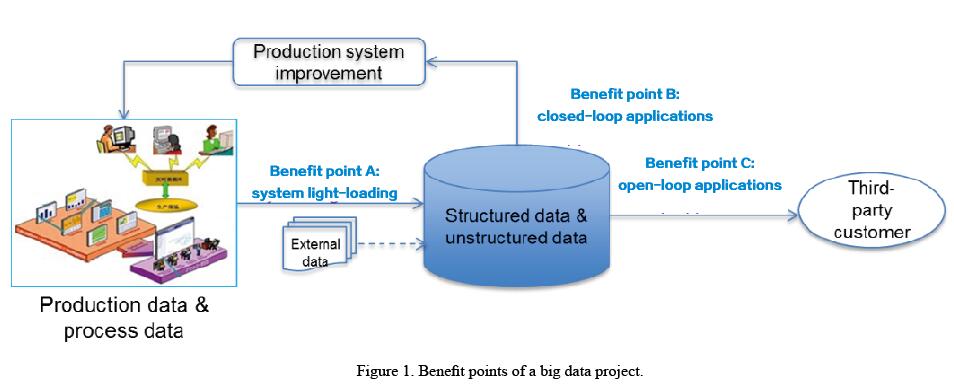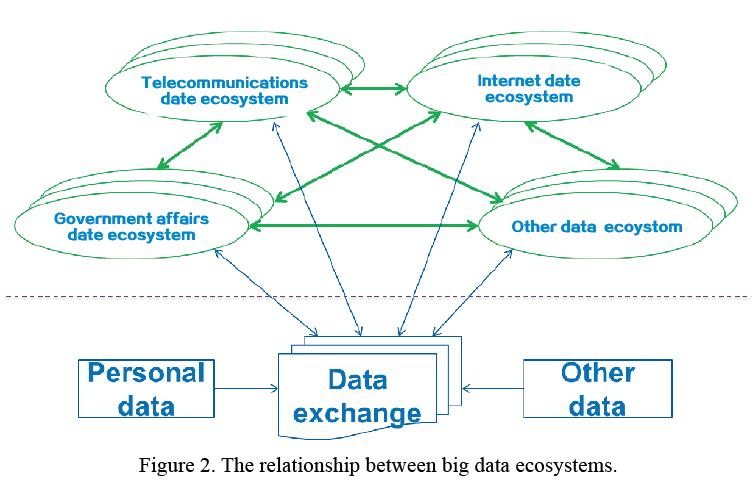Economic Feasibility of Big Data Construction
Big data can increase productivity and social benefits, and its essence is to improve the accuracy of human production activities. Academician E Weinan once put it: “Big data itself brings no direct benefits, for it cannot be eaten or worn. But it can eliminate waste.”
Before the appearance of big data, it was difficult to glean wisdom from machines because wisdom usually comes from experts across all industries. Currently, the input knowledge (or information) from a massive knowledge base made by big data mining can be transformed into wisdom that guides human beings to improve social and productive activities.
Each technology that produces social benefits must satisfy two prerequisites: technical feasibility and economic feasibility. The former means whether this technology provides corresponding methods for implementation, while the latter means whether the system (or product) constructed using this technology can bring benefits. Big data also needs to meet the two prerequisites before being applied on a large scale.
In the Gartner Hype Cycle 2014, big data was moving towards the trough of disillusionment after passing through a period of hype. Usually, technologies in this stage are technically feasible. Driven by the Hadoop-based open-source system, big data might already have the basic technical feasibility in most areas except a certain cutting-edge area. However, its economic feasibility is often ill-considered in project implementation, such as no clear project objective and excess initial investment. This means that the project fails to provide expected benefits. Therefore, economic feasibility is a key consideration for a big data project.
A big data project is usually constructed in the following mode: first construct a big data platform then add multiple applications onto the platform. The big data platform itself does not bring any economic benefit, and all economic benefit is reflected by corresponding applications and operations. Therefore, in early project planning, much attention should be paid to services built on the platform and also on the relevant business mode for economic feasibility of the project.
There are three benefit or profit points in a big data project (Fig. 1). Benefit point A is system light-loading. Storing a lot of historical data in the production system is expensive and can also affect system stability. Therefore, the benefit point A is nearly a “rigid demand”. Enterprises such as banks and securities can greatly reduce the load of their production systems and improve system stability only by transferring historical transaction data into the big data platform.

Benefit point B is closed-loop applications. The big data platform collects business process data generated by the production system and models the data. It also suggests improvements and provides analysis reports. It can remove or improve unreasonable processes to increase system production efficiency and reduce costs. For example, coverage information of a wireless network can be collected to guide network planning and optimization. This dramatically reduces capital and time costs compared with traditional network planning and optimization based on a drive test. Another example is the e-commerce recommendation system, which analyzes user attributes and labels from the data generated by an e-commerce website and then gives a recommendation to the e-commerce website for sales promotion. This is a closed loop feedback.
Benefit point C is open-loop applications. Data values are achieved chiefly by third parties. Data from telecom operators can be used for road planning and traffic density prediction. Related benefits are generated through data operation and exchange. Because it is difficult to obtain stable revenue from open loop applications, and it is also difficult to measure the ultimate value generated by the data because of the lack of feedback, a relevant closed loop is difficult to form.
In the early stage of project construction, business targets at the benefit points A and B are easy to be focused on, from which economic benefits can be easily produced. Although in the early stage it is difficult to generate economic benefits, in the long term the benefit point C can bring more benefit than the points A and B. Therefore, the sequence of business construction, i.e., when to deploy a business, is crucial to a big data project and can even determine whether a project is a success or failure.
In the initial project construction, closed-loop applications that easily generate economic benefits are often first considered, so that the project can sustain itself economically. Based on the data accumulated in the initial stage, open-loop applications are then expanded. Such construction sequence can help increase success rate of the project.
Big Data Ecosystems
A system based on the big data platform can obtain and accumulate core data through closed-loop applications and build an application ecosystem using these open-loop applications. A healthy application ecosystem must be able to solve the economic feasibility issue within the ecosystem, which means that applications in the ecosystem, such as system light-loading, closed-loop applications, and open-loop applications can create reasonable benefits and are commercially feasible.
There are many data ecosystems being constructed in all fields. As market competition intensifies, ecosystems that are not economically feasible will gradually be phased out or integrated. A few powerful ecosystems will dominate in certain fields. These powerful ecosystems solve the economic feasibility issue, and mine and monetize valuable data within their own ecological fields.
The relationship between big data ecosystems is shown in Fig. 2. To achieve collaboration and common prosperity between powerful ecosystems, data is transmitted and exchanged according to the principle of equality and mutual benefit. A small amount of data that is not involved in the ecosystems can be freely traded to maximize its social value through the data exchange.

In this era of explosive big-data growth, big data is becoming economically feasible in all fields, and big data services are becoming available everywhere. ZTE’s DAP big data platform provides data encapsulation, capability openness, and a quick and easy environment for application development that can help customers plan and construct their big data ecosystems in stages, reduce initial investment, and lower their project risks.